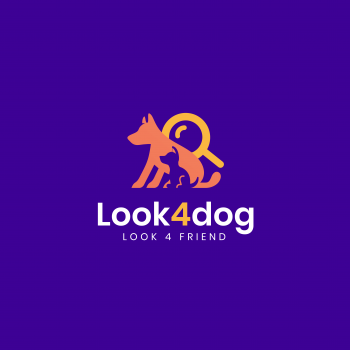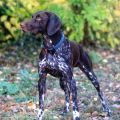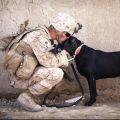The Alpine Dachsbracke, also known as the Alpenländische Dachsbracke or simply the Dachsbracke, is a small to medium-sized breed of scent hound originating from Austria. This breed is highly regarded for its exceptional tracking abilities and is primarily used for hunting small game, particularly in the Alpine regions of Europe. With its distinctive appearance and remarkable skills, the Alpine Dachsbracke has gained popularity not only as a hunting companion but also as a loyal and affectionate family pet.
The history of the Alpine Dachsbracke dates back several centuries, with its origins believed to be in the Austrian Alps. This breed was developed by crossing the larger Austrian scent hounds with the Dachshund, resulting in a smaller and more agile hunting dog. The Alpine Dachsbracke was specifically bred to track and hunt game such as hare, fox, and even wounded deer in the rugged and mountainous terrain of the Alps.
According to the FCI (Fédération Cynologique Internationale) typology, the Alpine Dachsbracke belongs to Group 6, Section 1.2 - Scenthounds, Small-sized Hounds. This classification places them among other scent hound breeds that excel in tracking and trailing scents. The breed is recognized by the FCI, as well as other major kennel clubs worldwide.
The Alpine Dachsbracke is primarily a working breed, bred for its hunting abilities. Their keen sense of smell, coupled with their compact size and sturdy build, allows them to navigate through dense underbrush and challenging terrains with ease. These dogs are known for their determination, stamina, and excellent tracking skills, making them highly valued by hunters.
In terms of physical characteristics, the Alpine Dachsbracke is a compact and muscular breed. They have a well-proportioned body with a deep chest, strong legs, and a slightly elongated back. The head is broad and well-defined, with a moderately long muzzle and a black nose. Their eyes are medium-sized and have a gentle expression, while their ears are set high and hang close to the head.
The average height of an Alpine Dachsbracke ranges between 13.5 to 14.5 inches (34 to 37 cm) at the shoulder, with males typically being slightly taller than females. As for weight, these dogs generally weigh between 33 to 40 pounds (15 to 18 kg). Despite their small stature, they possess great strength and agility, allowing them to tackle challenging terrains and keep up with the pace of a hunt.
The Alpine Dachsbracke has a dense and weather-resistant double coat, which consists of a harsh and straight outer coat and a soft undercoat. The coat color is typically a rich shade of red with black markings on the face, ears, and tail. This coloration helps them blend into their natural surroundings while hunting. Regular brushing is necessary to maintain the coat's condition and remove any loose hair.
In terms of temperament, the Alpine Dachsbracke is known for its friendly and affectionate nature. They are loyal and devoted to their families, making them excellent companions and family pets. However, it's important to note that their strong hunting instincts may lead them to chase small animals, so early socialization and training are crucial.
The Alpine Dachsbracke is an intelligent breed that responds well to positive reinforcement training methods. They are eager to please their owners and have a strong work ethic. Mental stimulation and regular exercise are essential to keep them happy and prevent boredom-related behaviors.
The average lifespan of an Alpine Dachsbracke is around 12 to 14 years, which is relatively long for a breed of its size. However, like all dogs, they may be prone to certain health issues, including hip dysplasia, ear infections, and obesity. Regular veterinary check-ups, a balanced diet, and an active lifestyle can help mitigate these risks and ensure the dog's overall well-being.
In conclusion, the Alpine Dachsbracke is a remarkable breed that combines the qualities of a skilled hunting dog with the loyalty and affection of a family companion. Their compact size, exceptional tracking abilities, and friendly temperament make them a popular choice among hunters and dog enthusiasts alike. With proper care, training, and socialization, the Alpine Dachsbracke can thrive in various environments and provide years of joy and companionship to its owners.
The Alpine Dachsbracke, also known as the Alpenländische Dachsbracke, is a small to medium-sized breed of scent hound originating from Austria. These dogs possess a unique character that sets them apart from other breeds. With their distinctive appearance and charming personality, Alpine Dachsbrackes make wonderful companions for those who appreciate their hunting instincts and loyal nature.
In terms of character, Alpine Dachsbrackes are known for being intelligent, courageous, and determined. They were originally bred for hunting purposes, specifically tracking and trailing game such as deer, boar, and hare. This breed's strong sense of smell and exceptional tracking abilities make them excellent hunters. However, their hunting instincts can sometimes lead them to be independent and focused on a scent, so early training and socialization are crucial.
Despite their hunting background, Alpine Dachsbrackes are also known for being friendly and affectionate towards their families. They form strong bonds with their owners and are generally good with children and other pets when properly introduced. However, it is important to note that their hunting instincts may cause them to chase smaller animals, so caution should be exercised when introducing them to small pets.
When it comes to training, Alpine Dachsbrackes are intelligent and eager to please their owners. They respond well to positive reinforcement techniques such as praise, treats, and play. Consistency and patience are key when training this breed, as they can be stubborn at times. Early socialization is essential to ensure they grow up to be well-rounded dogs who are comfortable in various environments and around different people and animals.
Exercise is vital for Alpine Dachsbrackes, as they have high energy levels and a strong need for mental stimulation. Daily walks, playtime, and engaging activities such as puzzle toys or scent games are recommended to keep them physically and mentally satisfied. These dogs thrive in an environment where they have ample space to explore and exercise, making them better suited for homes with a yard or access to outdoor areas.
Grooming requirements for Alpine Dachsbrackes are relatively low. Their short, dense coats are weather-resistant and only require occasional brushing to remove loose hair. Regular dental care, nail trimming, and ear cleaning should also be part of their grooming routine to maintain their overall health and well-being.
In conclusion, Alpine Dachsbrackes are intelligent, courageous, and loyal dogs with a strong hunting instinct. They make excellent companions for active individuals or families who can provide them with the exercise, mental stimulation, and training they require. With proper socialization and training, these dogs can thrive in various environments and form strong bonds with their owners. If you are looking for a loyal and spirited companion with a love for the outdoors, the Alpine Dachsbracke may be the perfect breed for you.
The Alpine Dachsbracke is a small to medium-sized breed of dog that originated in Austria. Known for their hunting skills and strong scenting abilities, these dogs require specific care to ensure their health and well-being. Here are some tips on how to care for Alpine Dachsbracke dogs, including what to do and what not to do:
1. Exercise: Alpine Dachsbrackes are an active breed that requires regular exercise to stay healthy and happy. Daily walks, playtime, and mental stimulation through activities like puzzle toys or scent games are essential. However, avoid excessive exercise, especially in hot weather, as these dogs can overheat easily.
2. Grooming: This breed has a short, dense coat that requires minimal grooming. Regular brushing with a soft bristle brush will help remove loose hair and keep their coat in good condition. Bathing should only be done when necessary, using a mild dog shampoo to avoid skin irritation.
3. Nutrition: Providing a balanced and nutritious diet is crucial for the overall health of Alpine Dachsbrackes. Feed them high-quality dog food that is appropriate for their age, size, and activity level. Avoid overfeeding, as this breed can be prone to weight gain, which can lead to various health issues.
4. Training and socialization: Alpine Dachsbrackes are intelligent dogs that respond well to positive reinforcement training methods. Start training and socializing them from a young age to ensure they grow up to be well-behaved and friendly dogs. Early socialization with other animals and people is essential to prevent any potential aggression or fearfulness.
5. Health care: Regular veterinary check-ups are essential to monitor the health of your Alpine Dachsbracke. Vaccinations, parasite prevention, and dental care should be part of their routine healthcare. Additionally, be aware of any breed-specific health issues such as hip dysplasia or ear infections, and consult with your vet for appropriate preventive measures.
6. Mental stimulation: Alpine Dachsbrackes are intelligent dogs that thrive on mental stimulation. Engage them in activities that challenge their minds, such as puzzle toys, obedience training, or scent work. This will help prevent boredom and destructive behaviors.
7. Safety precautions: Ensure your Alpine Dachsbracke is always kept in a secure and fenced area, as they have a strong prey drive and may chase after small animals. Additionally, provide them with a comfortable and safe sleeping area, away from drafts and extreme temperatures.
What not to do:
1. Do not leave your Alpine Dachsbracke alone for extended periods. They are social dogs that thrive on human companionship and may develop separation anxiety if left alone for too long.
2. Avoid harsh training methods or punishment-based techniques. These dogs respond best to positive reinforcement and gentle guidance.
3. Do not overfeed your Alpine Dachsbracke. Obesity can lead to various health issues, including joint problems and heart disease. Follow a feeding schedule and monitor their weight to ensure they maintain a healthy body condition.
4. Avoid skipping regular veterinary check-ups. Early detection of any health issues is crucial for prompt treatment and a longer, healthier life for your dog.
5. Do not neglect their dental care. Regular teeth brushing and providing appropriate chew toys can help prevent dental diseases and keep their teeth clean.
In conclusion, caring for an Alpine Dachsbracke requires providing regular exercise, proper nutrition, grooming, training, and socialization. By following these tips and avoiding common mistakes, you can ensure your Alpine Dachsbracke lives a happy, healthy, and fulfilling life.
The Alpine Dachsbracke, also known as the Alpine Badger Dog, is a small to medium-sized breed that originated in Austria. These dogs possess a distinctive coat color that adds to their overall charm and appeal. The common color of Alpine Dachsbracke dogs is a rich and warm shade of red, often described as a deep chestnut or mahogany hue.
The coat of an Alpine Dachsbracke is short, dense, and weather-resistant, providing them with protection in harsh alpine climates. The red coloration is evenly distributed throughout the body, giving the dog a uniform appearance. The intensity of the red may vary slightly from dog to dog, with some individuals displaying a slightly lighter or darker shade.
One of the most striking features of the Alpine Dachsbracke's coat is the presence of black markings. These markings are typically found on the face, ears, back, and tail. The black mask on their face accentuates their expressive eyes, which are usually dark brown or hazel in color. The ears are medium-sized, set high on the head, and are adorned with black fur, creating a beautiful contrast against the red coat.
The back of an Alpine Dachsbracke is often adorned with a black saddle-like pattern, which extends from the neck to the base of the tail. This distinctive marking is a characteristic feature of the breed and adds to their unique appearance. The tail, which is set high and carried erect, is also adorned with a black tip, further enhancing the overall coloration of the dog.
While the primary color of the Alpine Dachsbracke is red, it is not uncommon to find white markings on their chest, paws, or the tip of the tail. These white patches add a touch of elegance to their appearance and provide a delightful contrast against the rich red coat.
The color of the Alpine Dachsbracke's coat not only contributes to their aesthetic appeal but also serves a functional purpose. The red coloration allows them to blend seamlessly with their natural surroundings, making them excellent hunters in the alpine terrain. Their coat color helps them to remain inconspicuous while tracking game, ensuring their success as skilled scent hounds.
In conclusion, the common color of Alpine Dachsbracke dogs is a deep chestnut or mahogany red, with black markings on the face, ears, back, and tail. This coloration, along with their white patches, creates a visually striking and distinctive appearance. The red coat not only adds to their beauty but also aids in their hunting abilities, allowing them to excel in their role as alpine scent hounds.
The Alpine Dachsbracke, also known as the Alpenländische Dachsbracke, is a small to medium-sized breed of scent hound originating from Austria. These dogs are known for their excellent tracking abilities and are primarily used for hunting in the Alpine regions. When it comes to their health, Alpine Dachsbracke dogs are generally robust and have a good overall health. However, like any other breed, they are prone to certain health issues that owners should be aware of.
One of the most common health problems seen in Alpine Dachsbracke dogs is obesity. These dogs have a tendency to gain weight easily, especially if they are not provided with enough exercise and a balanced diet. Obesity can lead to various health complications, including joint problems, heart disease, and diabetes. Therefore, it is crucial to monitor their food intake and ensure they receive regular exercise to maintain a healthy weight.
Another health concern in Alpine Dachsbracke dogs is hip dysplasia. This is a genetic condition where the hip joint does not develop properly, leading to pain, lameness, and arthritis. Responsible breeders perform hip evaluations on their breeding dogs to reduce the risk of passing on this condition. Regular exercise, a healthy diet, and maintaining a proper weight can also help minimize the impact of hip dysplasia.
Like many other breeds, Alpine Dachsbracke dogs are also prone to ear infections. Their long, droopy ears can trap moisture and debris, creating a favorable environment for bacteria and yeast to thrive. Regular ear cleaning with a veterinarian-recommended solution can help prevent infections. Additionally, it is important to dry their ears thoroughly after swimming or bathing to avoid moisture buildup.
Dental issues are another common problem in Alpine Dachsbracke dogs. Poor dental hygiene can lead to gum disease, tooth decay, and bad breath. Regular brushing of their teeth with a dog-specific toothpaste and providing them with appropriate chew toys can help maintain good oral health.
Regular veterinary check-ups are essential for the overall well-being of Alpine Dachsbracke dogs. These visits allow the veterinarian to assess their health, administer necessary vaccinations, and perform preventive screenings. Additionally, it is important to keep up with parasite prevention, including flea and tick control, as these dogs spend a lot of time outdoors.
Proper nutrition is vital for the health of Alpine Dachsbracke dogs. Providing them with a high-quality, balanced diet that meets their nutritional needs is essential. It is recommended to feed them a diet formulated for their specific life stage and size, and to avoid overfeeding to prevent obesity.
Exercise is crucial for the physical and mental well-being of Alpine Dachsbracke dogs. They are an active breed that requires regular exercise to prevent boredom and maintain a healthy weight. Daily walks, playtime, and engaging in activities that stimulate their natural hunting instincts are recommended.
In conclusion, Alpine Dachsbracke dogs are generally healthy and robust. However, owners should be aware of potential health issues such as obesity, hip dysplasia, ear infections, and dental problems. By providing them with a balanced diet, regular exercise, proper dental care, and routine veterinary check-ups, owners can ensure the overall health and well-being of their beloved Alpine Dachsbracke companions.
The Alpine Dachsbracke is a small to medium-sized breed of dog that originated in Austria. Known for their hunting abilities, these dogs have a high energy level and require a well-balanced diet to maintain their health and vitality. Proper nutrition plays a crucial role in their overall well-being, and it is important to provide them with the right food and avoid certain dietary pitfalls.
When it comes to feeding an Alpine Dachsbracke, it is essential to choose a high-quality dog food that meets their specific nutritional needs. Look for a brand that contains real meat as the primary ingredient, as this breed requires a protein-rich diet to support their active lifestyle. Additionally, the food should be formulated to provide a balanced blend of carbohydrates, fats, vitamins, and minerals.
To ensure optimal nutrition, it is recommended to feed your Alpine Dachsbracke twice a day, dividing their daily food intake into two equal meals. This helps prevent overeating and aids in digestion. The exact amount of food required will depend on factors such as age, weight, activity level, and metabolism. Consult with your veterinarian to determine the appropriate portion size for your dog.
In addition to commercial dog food, you can also incorporate some fresh, whole foods into your Alpine Dachsbracke's diet. Lean meats like chicken, turkey, or beef can be cooked and added to their kibble occasionally. However, it is important to avoid seasoning the meat with spices, as some can be harmful to dogs. You can also include small amounts of fruits and vegetables like carrots, apples, or green beans as healthy treats.
While it is important to provide a well-rounded diet, there are certain foods that should be avoided as they can be toxic or harmful to dogs. Some common foods that should never be fed to an Alpine Dachsbracke include chocolate, onions, garlic, grapes, raisins, avocados, and anything containing caffeine or alcohol. These foods can cause serious health issues ranging from gastrointestinal upset to organ failure.
Another aspect of nutrition to consider is the avoidance of overfeeding. Alpine Dachsbrackes have a tendency to gain weight if they are overfed or not given enough exercise. Obesity can lead to various health problems, including joint issues, heart disease, and a decreased lifespan. It is important to monitor your dog's weight and adjust their food intake accordingly. If you notice your dog gaining weight, consult with your veterinarian to develop a weight management plan.
Lastly, always ensure that your Alpine Dachsbracke has access to fresh, clean water at all times. Hydration is crucial for their overall health and helps maintain proper bodily functions.
In conclusion, providing proper nutrition is vital for the health and well-being of Alpine Dachsbracke dogs. Choose a high-quality dog food that meets their specific nutritional needs, feed them twice a day, and incorporate fresh, whole foods occasionally. Avoid feeding them toxic foods and be mindful of portion sizes to prevent obesity. By following these guidelines and consulting with your veterinarian, you can ensure that your Alpine Dachsbracke remains healthy and happy for years to come.




